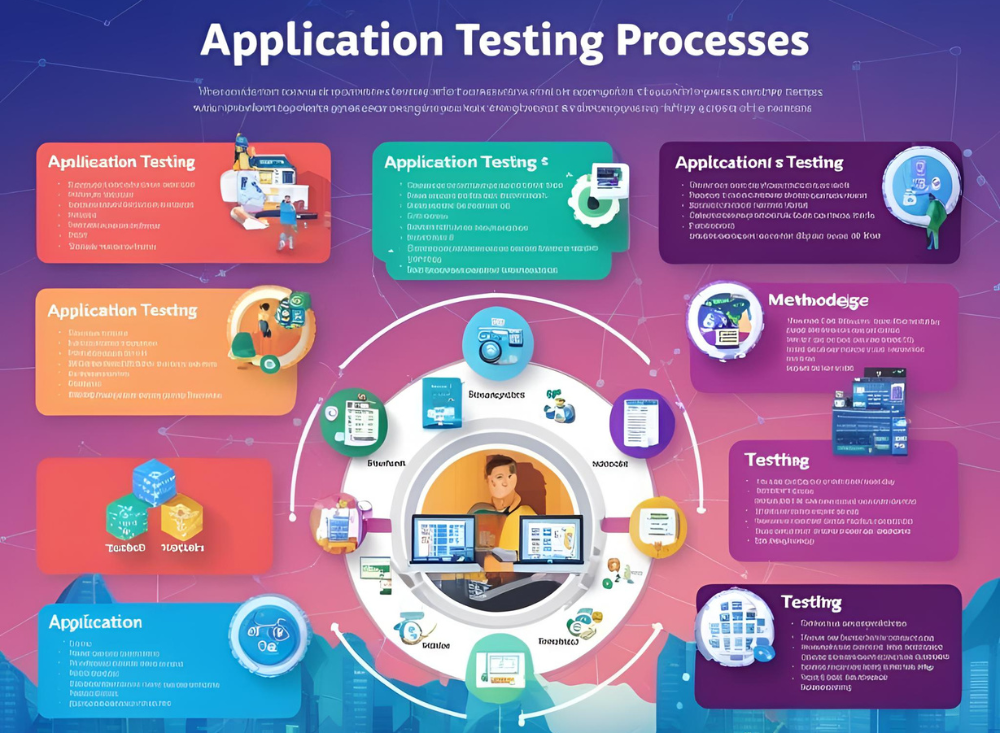
In today’s digital-first world, web and mobile applications have become the primary interface between businesses and their customers. Whether it’s an e-commerce platform, a banking app, or a productivity tool, the success of these applications hinges on their performance, usability, and reliability. Web and mobile application testing plays a crucial role in ensuring that these applications meet user expectations and deliver a seamless experience across devices and platforms. This article explores the importance, types, challenges, and best practices for web and mobile application testing.
What is Web and Mobile Application Testing?
Web and mobile application testing is the process of evaluating the functionality, performance, usability, and security of web-based and mobile applications. The goal is to identify and resolve issues before the application is released to users, ensuring a high-quality product that meets business and user requirements.
Why is Web and Mobile Application Testing Important?
Testing web and mobile applications is essential for several reasons:
- Ensures Functionality: Validates that all features and functionalities work as intended.
- Enhances User Experience: Ensures a smooth, intuitive, and responsive experience for users.
- Improves Performance: Identifies and resolves performance bottlenecks, such as slow load times or crashes.
- Ensures Security: Protects sensitive user data and prevents vulnerabilities.
- Supports Compatibility: Ensures the application works seamlessly across different devices, browsers, and operating systems.
Types of Web and Mobile Application Testing
To ensure comprehensive coverage, web and mobile application testing involves various types of testing. Here are the key types:
1.Functional Testing
- Validates that the application’s features and functionalities work as expected.
- Ensures compliance with business requirements and user expectations.
2.Usability Testing
- Evaluates the application’s user interface (UI) and user experience (UX).
- Ensures the application is intuitive, easy to navigate, and visually appealing.
3.Performance Testing
- Assesses the application’s speed, responsiveness, and stability under various conditions.
- Identifies bottlenecks and ensures optimal performance.
4.Compatibility Testing
- Tests the application across different devices, browsers, and operating systems.
- Ensures a consistent experience for all users.
5.Security Testing
- Identifies vulnerabilities and ensures the application protects sensitive user data.
- Tests for issues such as unauthorized access, data leaks, and encryption flaws.
6.Regression Testing
- Validates that new updates or changes do not break existing functionalities.
- Ensures the application remains stable and reliable over time.
7.Localization Testing
- Ensures the application is adapted for different languages, regions, and cultures.
- Validates text, date formats, currency, and other region-specific elements.
Challenges in Web and Mobile Application Testing
While testing is critical, it comes with its own set of challenges:
- Device and Platform Fragmentation: The wide variety of devices, screen sizes, and operating systems makes testing complex.
- Network Conditions: Applications must perform well under different network conditions, such as low bandwidth or intermittent connectivity.
- Rapid Release Cycles: Frequent updates and releases require continuous testing to ensure quality.
- User Expectations: Users expect fast, reliable, and intuitive applications, increasing the pressure on testing teams.
- Security Concerns: Protecting sensitive user data and ensuring compliance with regulations is a growing challenge.
Best Practices for Web and Mobile Application Testing
To overcome these challenges and ensure high-quality applications, follow these best practices:
1.Define Clear Testing Objectives
- Identify key functionalities, user workflows, and performance metrics to test.
- Align testing objectives with business goals and user expectations.
2.Prioritize User-Centric Testing
- Focus on usability and user experience to ensure the application meets user needs.
- Conduct user acceptance testing (UAT) to gather feedback from real users.
3.Test Across Devices and Platforms
- Use real devices and emulators to test the application across different screen sizes, operating systems, and browsers.
- Ensure compatibility with popular devices and platforms.
4.Simulate Real-World Conditions
- Test the application under various network conditions, such as 3G, 4G, and Wi-Fi.
- Simulate high user loads to evaluate performance under stress.
5.Automate Repetitive Tests
- Automate regression tests, performance tests, and other repetitive scenarios to save time and resources.
- Use automation to ensure consistent and accurate results.
6.Focus on Security
- Conduct thorough security testing to identify and resolve vulnerabilities.
- Ensure compliance with data protection regulations, such as GDPR or HIPAA.
7.Implement Continuous Testing
- Integrate testing into the development lifecycle to ensure continuous validation.
- Use CI/CD pipelines to automate testing and deployment processes.
8.Monitor and Optimize
- Continuously monitor the application’s performance and user feedback post-release.
- Regularly update and optimize the application based on usage patterns and business needs.
Conclusion
Web and mobile application testing is a critical component of delivering high-quality digital experiences. By ensuring functionality, performance, usability, and security, testing helps businesses build applications that meet user expectations and drive success. While challenges like device fragmentation and rapid release cycles exist, adopting best practices such as user-centric testing, automation, and continuous testing can help overcome these hurdles.
Start implementing these strategies today and take your web and mobile application testing efforts to the next level. With a well-tested application, you can enhance user satisfaction, build trust, and stay ahead in the competitive digital landscape. Remember, quality is not an accident — it’s the result of thorough and thoughtful testing!